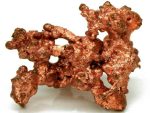THE Zimbabwe Dry Port in Namibia recorded N$6.1 million profit during the first half of the year, attributable to controlled expenditure and high revenue during the period under review.
A dry port, sometimes referred to as an inland port, is an inland intermodal terminal, directly connected by road or rail to a seaport, operating as a centre for the transshipment of sea cargo to inland destinations.
President Emmerson Mnangagwa officially opened the dry port on July 26, 2019.
Built by National Handling Services at Walvis Bay, the dry port was built on approximately 19 000 square meters and leased to the country by Namibia for 50 years.
Zimbabwe established the dry port in Walvis Bay to create a strategic and cost-effective gateway to the Atlantic Ocean for its imports and exports, facilitating trade with Western Africa, Europe and the Americas.
In his presentation during the National Handling Services’ mid-year strategic review, Zimbabwe Dry Port general manager Mr Theodore Chinyanga said the financial performance of the facility was improving on controlled operation expenses.
The organisation is working on operationalising the dry port by the end of this year.
Mr Chinyanga said the dry port was currently getting significant business from an oil and gas company, which is occupying much of the space for storage.
“For the first quarter, we recorded N$6,1 million revenue and in the second quarter we recorded N$5,5 million,” said Mr Chinyanga.
“We largely get our revenue coming from a company called Afrishore, which is into oil and gas, and what we are doing is that the equipment that they use in drilling is the one that is covering about 15 000 square meters of our 18 3844 square meter space.” The Herald










